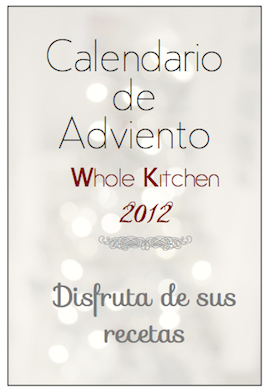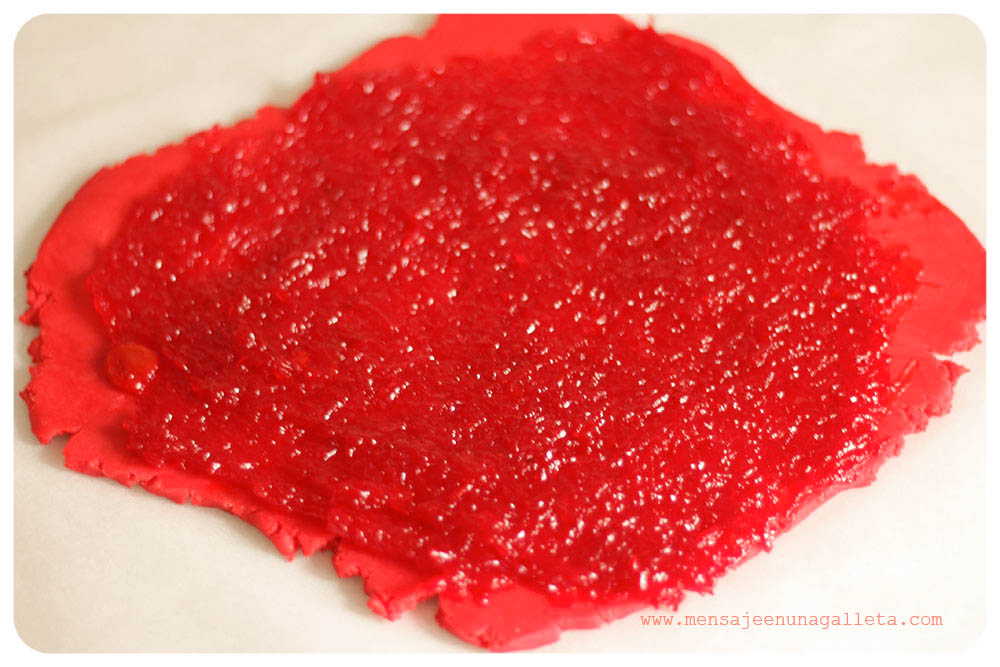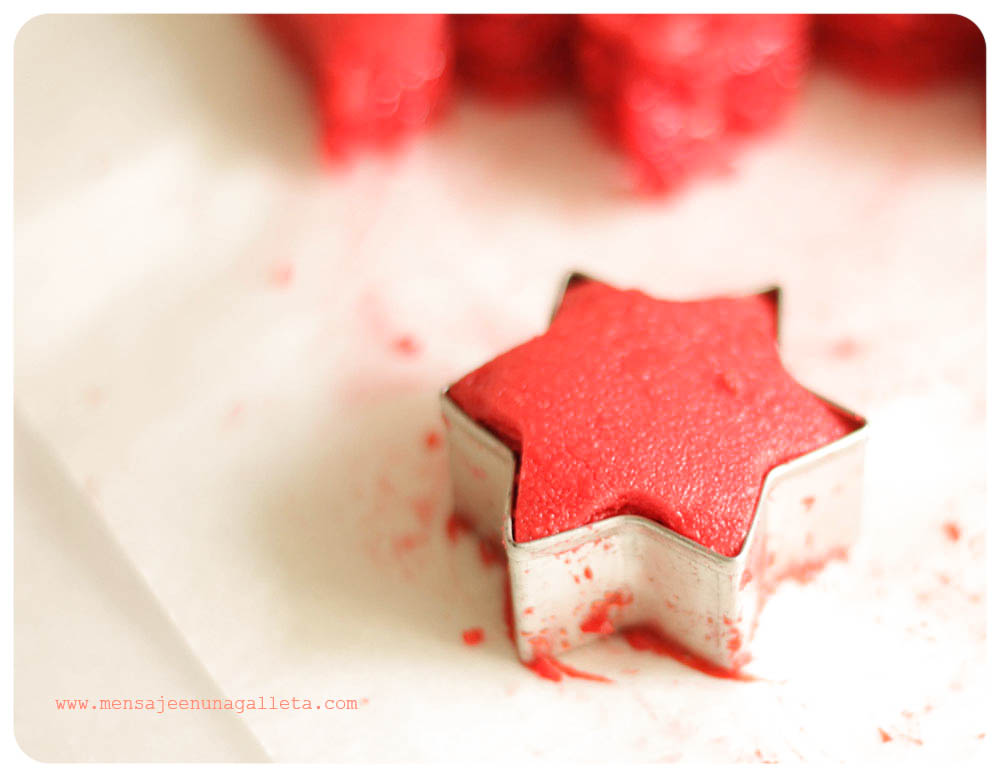
Hace unos días recibimos un correo de Bea y Silvia en el que nos invitaban a participar en su Calendario de Adviento 2012 ¿Qué? ¿Cómo? ¿Nosotras en Whole Kitchen? Madre mía, ¡qué ilusión!
Some days ago, we received a mail from Bea and Silvia inviting us to participate in their 2012 Advent Calendar. What? How? Us? In Whole Kitchen Magazine? Wow! My Goodness! What a blast!

Después de emocionarnos el siguiente paso fue pensar, y también discutir un poco, en una receta navideña, queríamos que fuera una receta española, fácil pero diferente. Así que decidimos, pero no por unanimidad, hacer cortadillos de cidra porque llevan ingredientes muy españoles: manteca de cerdo ibérico, anís y cabello de ángel. El cabello de ángel, por si no lo sabéis, que seguro que sí, se hace a partir de la cidra, una variedad de calabaza, cuya carne es blanca, en vez de naranja.
After all the excitement, the next step was to think, and also to discuss a bit, about a Christmas recipe. We wanted it to be a Spanish recipe, easy but different. So we both decided, not unanimously, to make Cortadillos (little cider bars) because the ingredients are very Spanish: Iberian lard, anisette and angel’s hair paste. In case you do not know it, but I am sure you do, this paste is made from cider, a variety of pumpkin whose pulp is white instead of orange.

Si conseguís una cidra también podéis hacer vuestro propio cabello de ángel, pero tenéis que tener la precaución de no abrir la cidra directamente con un cuchillo, sino que debéis lanzarla contra el suelo para abrirla (envuelta en una bolsa, para no manchar el suelo y además porque os la vais a comer). No se abre a la primera, por cierto. La tradición dice que hay que hacerlo así para evitar que sepa a pescado (al menos eso dice mi padre).
If you get some cider you can also make your own angel’s hair paste, but you have to be careful and not open the cider directly with a knife, but throw it onto the floor to open it (inside a plastic bag so the floor does not get dirty and also because you are going to eat it). By the way, it will not break open on the first attempt. Tradition has it that you have to do it that way to avoid taste of fish (at least that is what my father says).
Aquí van por fin los ingredientes:
250 gramos de manteca de cerdo ibérico
500 gramos de harina de repostería
100 gramos de azúcar glas
30 ml de anís
200 gr de cabello de ángel
1 teaspoon de pasta de vainilla de Madagascar (opcional)
These are the ingredients:
250 grams of Iberian lard
500 grams of cake flour
100 grams of icing sugar
30 ml anisette
200 grams angel’s hair paste.
1 teaspoon Madagascar vanilla paste (optional)
Vamos con la elaboración – Instructions
Mezclamos la manteca con el azúcar y el anís. Mix the lard, sugar and anisette.

Cuando esté en forma de crema podemos añadirle un poquito de colorante rojo para darle un toque diferente. When you get a creamy texture you can add a bit of red food coloring for a different touch.

Después vamos añadiendo la harina poco a poco y lo vamos mezclando. Then start adding the flour little by little while mixing it.

Amasamos un poco y metemos la masa en la nevera para que se ponga durita. Si se nos pega demasiado a las manos, le añadimos un poco más de harina. La dividimos en 2 ó en 3 partes según el nº de capas que queramos darle y estiramos cada parte entre dos papeles de horno.
Knead the dough a bit and let it cool in the fridge until it hardens. If the dough is too sticky, add a bit more flour. Divide it in 2 or 3 parts depending on the number of layers you want the bars to have and then smooth out each part between two wax paper sheets.
Metemos nuevamente cada masa en la nevera para que se endurezca otra vez. Mientras, aprovechamos para preparar el cabello de ángel añadiéndole un toque de colorante rojo y la cucharadita de vainilla si queremos.
Take the dough to the fridge once again until it hardens again. In the meantime, prepare the angel’s hair paste adding a touch of red food coloring and the vanilla teaspoon if you want to.

Una vez que han endurecido las planchas de masa, montamos todo el conjunto. Entre cada capa extendemos otra de cabello de ángel y vamos superponiéndolas una encima de otra.
Once the dough sheets are cool and hard, start shaping the bars. Extend a layer of angel’s hair paste between each dough sheet and place them on top of each other.


Metemos todo en el horno durante 30 minutos a 160 grados. Bake it in the oven, 30 minutes, 160ºC.
Dejamos enfriar y cortamos en porciones, espolvoreamos con azúcar glas y lo damos por terminado.
After that, let it cool outside the oven, cut them into bars and sprinkle with some icing sugar. That’s all!


Un beso y Feliz Navidad,
Merry Xmas,
Estíbaliz
PS: Thank you, Gloria!

















